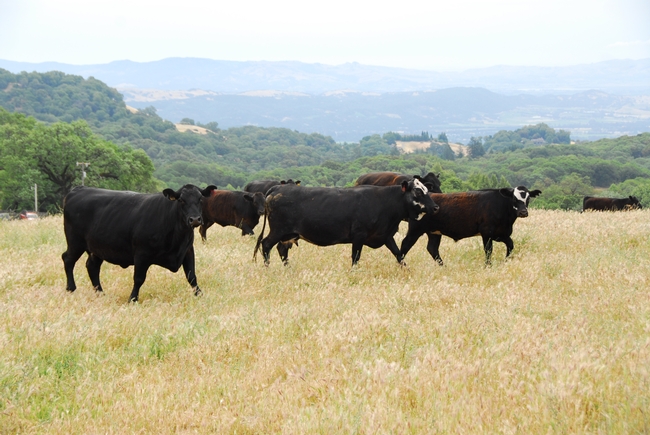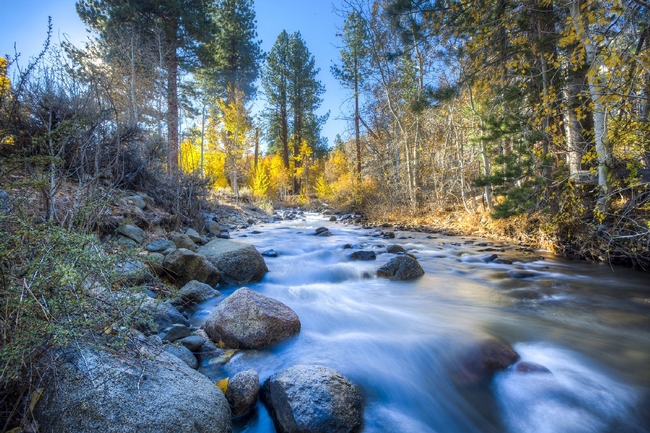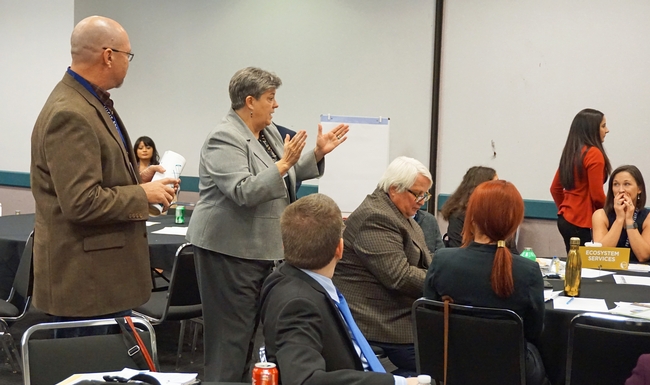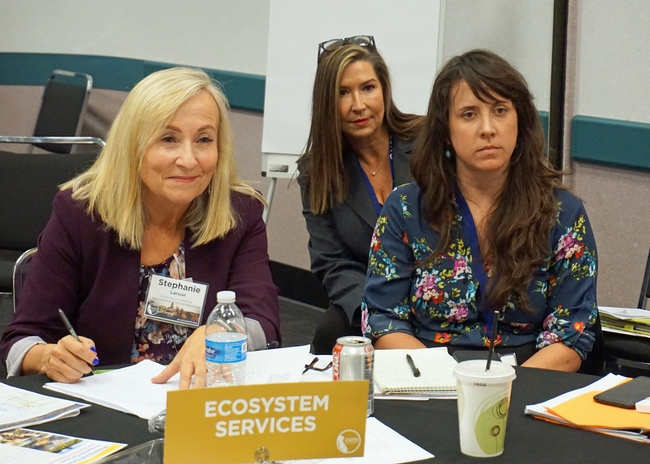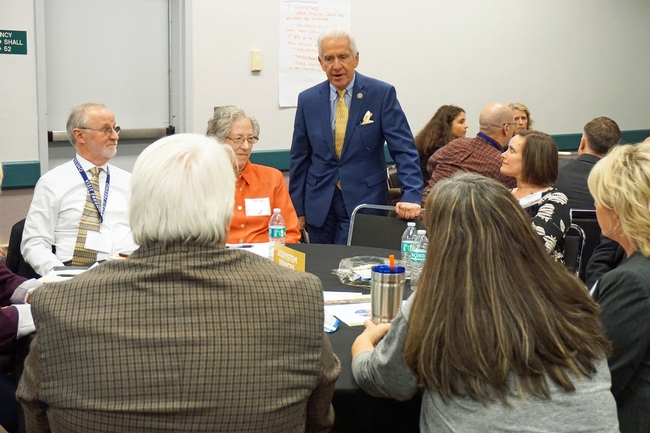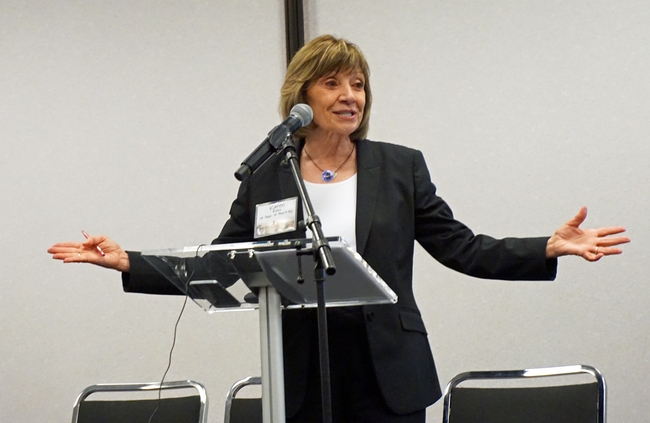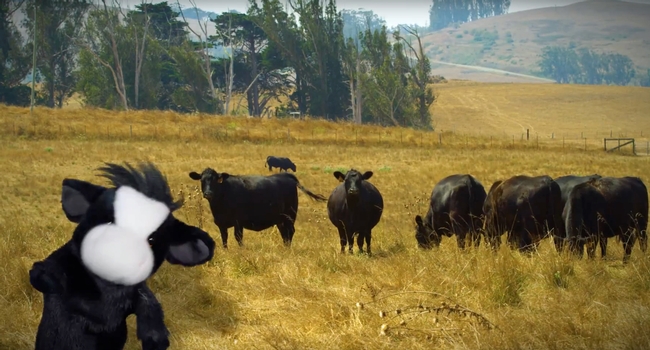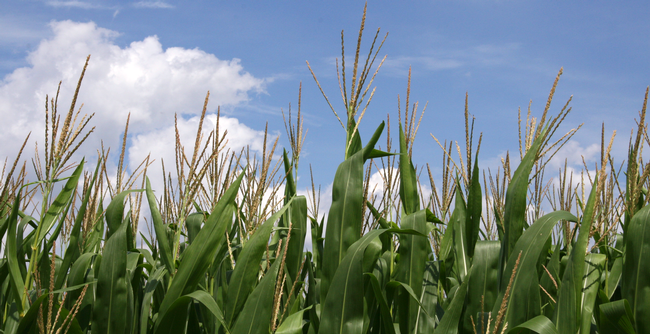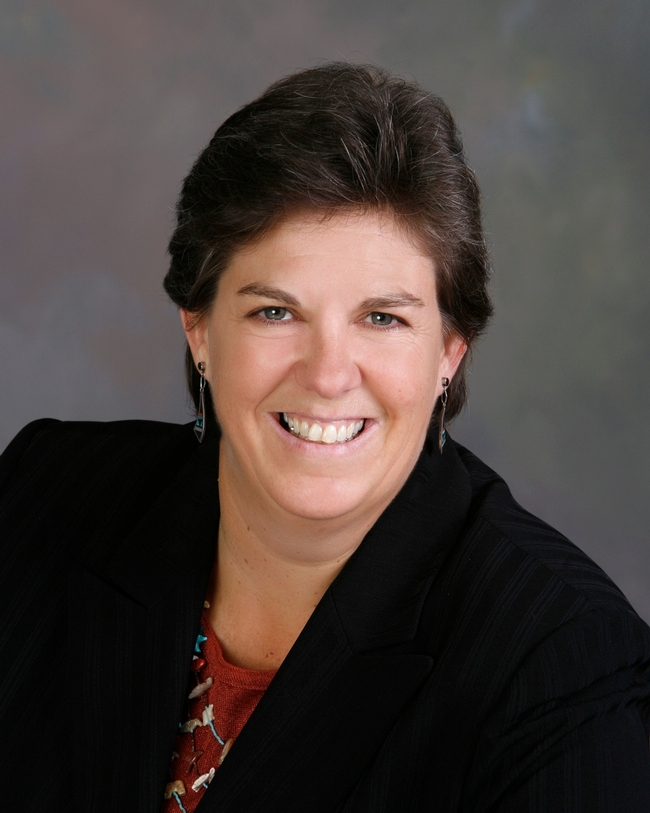Posts Tagged: Stephanie Larson
Match.Graze launches to reduce wildfire fuel, feed livestock
Matchmaking grazing animals with grass and rangelands
Professional grazing of overgrown rangelands, pastures and parcels is proven to reduce the spread of dangerous and costly wildfires.
Do you have land but no livestock and feel concerned about fire fuels on your property? Or are you a livestock owner that can provide a grazing service and/or need land and forage for your animals? Match.Graze can help.
Match.Graze is a free online platform connecting landowners statewide who want grazing animals to livestock owners with animals that can provide vegetation management services, created by UC Cooperative Extension.
From small semi-rural communities to large open spaces, grazing can provide an affordable solution to the inevitable accumulation of fire fuels. Grazing can be more cost-effective for reducing fuels on landscapes that are too steep, rocky or remote for mowing or chemical treatment, or in the wildland-urban interface where burning is not an option.
“I've noticed on several fires, including extreme fires, the fence lines where the fire just stopped. And the one variable, the one difference, was grazing,” said Marshall Turbeville, CAL FIRE battalion chief.
Cattle, sheep, goats and other grazing animals all have different roles to play in grazing for fire fuel reduction. If you want to use livestock to help reduce fire risk in your area, visit MatchGraze.com.
“Every property is different and requires thoughtful consideration of how it should best be grazed,” said Stephanie Larson, director of UCCE in Sonoma County, UCCE livestock and range management advisor and co-creator of the livestock-land matchmaking service. “UC Cooperative Extension is here to serve, put Match.Graze to work and let's prevent catastrophic fire while helping landowners and agriculture.”
To find a local grazing partner, visit MatchGraze.com, set up a free account, create a pin on the map and make a match.
To protect California ecosystem services, they must be valued
The ecosystem services of landscapes in California are essential to the state's future, but many people take them for granted.
In addition to direct economic outputs, working landscapes – farms, rangelands, forests and fisheries, to name a few – sequester carbon, capture water, support wildlife, offer picturesque views and make space for hiking, skiing, boating and other recreational activities.
“We need to put a value to ecosystem services, from an economic standpoint, that incentivizes people who own and manage these landscapes so they can continue to manage them for everyone's benefit,” said Stephanie Larson, UC Cooperative Extension rangeland advisor in Sonoma County.
When ecosystem services have been monetized, proper compensation can be calculated, ensuring benefits like clean water, fresh air and a livable climate are protected for future generations.
In November, UC Agriculture and Natural Resources released a report at the California Economic Summit in Fresno on the value of California's working landscapes. The report determined the state's working landscapes generate $333 billion in annual sales and 1.5 million jobs. That number does not include ecosystem services.
“The value of ecosystem services is probably higher than the $333 billion direct economic contribution of working landscapes outlined in the report,” said Glenda Humiston, University of California vice president for agriculture and natural resources. Humiston is chair of the economic summit's working landscape task force. “The problem is, when we don't have that quantified, it's hard to make investments to make sure those ecosystem services are maintained.”
Humiston said that, in time, systems can be developed for the public to support the ecosystem services they enjoy.
“You might have a small surcharge on binoculars,” she said. “That money could be used to protect bird habitat so birders can go somewhere to see birds. Water districts might assess a surcharge on your water bill to pay for the forested watersheds where they are getting your water. There are many different mechanisms to do this. We're trying to figure out what would be the best mechanism.”
During the summit, a team of researchers, policymakers and industry professionals launched a new phase of work to calculate with scientific accuracy the value of ecosystem services. Larson is a member of the leadership team, along with executive director of the Central Valley Partnership Dan O'Connell and Sequoia Riverlands Trust director of pubic planning and policy Adam Livingston.
The team is working with partners to secure funding and technical support to integrate data sets already available from the Council of Governments' Rural-Urban Connections Strategy into an open source, statewide system for mapping ecosystem services.
Once the tool is established, the team will be ready to pilot test it in four areas of California that provide ecosystem services.
“I love this concept,” said Kenny Spain, economic development specialist with the Headwaters Fund in Humboldt County and a member of the task force. “It's a valuable tool.”
Learn more:
View a 4-minute video of UC ANR vice president Glenda Humiston announcing the release of the report, California's Working Landscape: A Key Contributor to the State's Economic Vitality, at the 2019 California Economic Summit.
View California Governor Gavin Newsom's keynote address at the 2019 California Economic Summit:
Videos show hikers how to avoid Black Friday stampedes on park trails
While Americans traditionally beat a path to the malls the day after Thanksgiving, many opt out of shopping on Black Friday to enjoy the outdoors. In regional parks and other open spaces, hikers may encounter crowds of a different sort – cattle grazing with their calves. A 1,200-pound cow blocking the path can be daunting.
With a little patience and understanding, people who hike, bike and horseback ride can coexist peacefully with the cattle, according to Sheila Barry, UC Cooperative Extension livestock and natural resources advisor in Santa Clara County.
For happier trails, UC Agriculture and Natural Resources has produced a series of videos that show hikers how they can amicably share open space with their beefy neighbors. In a two-minute video, a black cow puppet with a furry white face describes how to politely coax cows to moo-ove aside without spurring a Black Friday stampede.
“We wanted to produce videos that are entertaining as well as informative,” Barry said.
The cow pun-filled video also describes the ecosystem services cattle provide by consuming nearly their body weight in plants. By grazing, cows manage the vegetation, reducing wildfire fuel, increasing water capture and promoting the diversity of native grasses and wildflowers.
In “Sharing open spaces with livestock,” the UC Agriculture and Natural Resources livestock experts give four simple tips for safely sharing open space with cows on the trail:
- Keep moo-ving and speak in a normal tone. Sudden movements and loud noises may surprise cows.
- Approach cows from the side or front. They find it udderly unnerving to have someone sneak up from behind, the bovine blind spot.
- Steer clear of getting between a protective mother and her calf.
- If you need to move a cow, step slowly into its flight zone. Invading the animal's “personal space” will motivate it to mosey aside.
A second video, “Sharing open spaces with livestock when you have a dog,” gives advice for dog owners to keep their best friends safe around cows.
In a third video, “A year in the life of a cow,” the UC Cooperative Extension spokespuppet describes a typical year for a beef cow.
“The videos are a fun way to educate the public about grazing on rangelands,” said Stephanie Larson, UC Cooperative Extension livestock and rangeland advisor in Sonoma County.
The videos are based on the UC ANR publication “Understanding Working Rangelands,” authored by Barry and Larson, at http://ucanr.edu/shareopenspace.
Watch all three videos on UC ANR's YouTube channel:
Sharing open spaces with livestock https://youtu.be/Qd8LEGLDhaM
Sharing open spaces with livestock when you have a dog https://youtu.be/zzdGnfFwmcA
A year in the life of a cow https://youtu.be/znJbWknVXVg
Anti-GMO measure is on the Sonoma County ballot
Sonoma County residents are voting today whether to join neighboring counties in a ban of genetically modified agricultural crops, reported Filipa Ioannou in the San Francisco Chronicle.
County voters rejected a similar ordinance 11 years ago. However, judging from the money donated to the campaigns in favor and against Measure M, some minds have been changed. In 2005, more than a $1 million went into the fight, with opponents outspending supporters by about $55,000. This time, the supporters have raised more than detractors, with the campaign in favor receiving $278,233, and the campaign against $67,500, the article said.
This comes despite an impact report by the director of UC Cooperative Extension in Sonoma County, Stephanie Larson. The report says few genetically engineered crops are now grown in Sonoma County and the potential impact of the ordinance on the growth of the local agricultural industry is not known. Larson's report says GMO crops have bee consumed by humans in billions of servings of food over 20 years without a single documented health problem.
“Is this maybe a solution in search of a problem? I wonder about that,” said Kim Vail, executive director of the Sonoma County Farm Bureau. “We live in a free-market economy. Consumers have choices, producers should have choices. Let the market decide.”
Passage of Measure M would align the county with its neighbors. Marin County, which passed Measure B in 2004, was the first to ban GMOs in the United States. Four other Northern California counties - Humboldt, Mendocino, Santa Cruz and Trinity - have banned genetically modified agricultural crops.
Update: Measure M passed with nearly 60 percent of the vote.
Glenda Humiston named vice president of UC Agriculture and Natural Resources
Longtime Sonoma County resident Glenda Humiston has been named vice president of UC Agriculture and Natural Resources, reported Angela Hart in the Santa Rosa Press Democrat. Humiston was appointed by UC President Janet Napolitano and confirmed by the UC Board of Regents. Her first day in her new post is Aug. 3.
"I'm excited beyond belief," Humiston told the Press Democrat. "This is such an opportunity to make a difference on many levels."
Humiston succeeds Barbara Allen-Diaz, who retired June 29.
The new vice president grew up raising cattle in Colorado and credits her participation in 4-H as a child with developing her interest in farmland preservation and environmental sustainability. She served as a Peace Corps volunteer in Tunisia, was deputy undersecretary for the USDA during the Clinton administration, and her most recent position has been California state director of USDA Rural Development.
“I've spent my whole life trying to bridge agriculture and environmental issues,” Humiston said. “What people don't realize is it's a natural bridge. When people get past the fighting, they often realize we have 80 percent in common.”
Stephanie Larson, UC ANR Cooperative Extension advisor and director of the Sonoma County office, called the appointment of the Sonoma County resident "exciting."
“If you think about Sonoma County, we have a half-million acres that can function as some form of working landscape — like forest lands, croplands and water," Larson said. "Everything has an opportunity and these are going to be key to address drought and climate change.”


